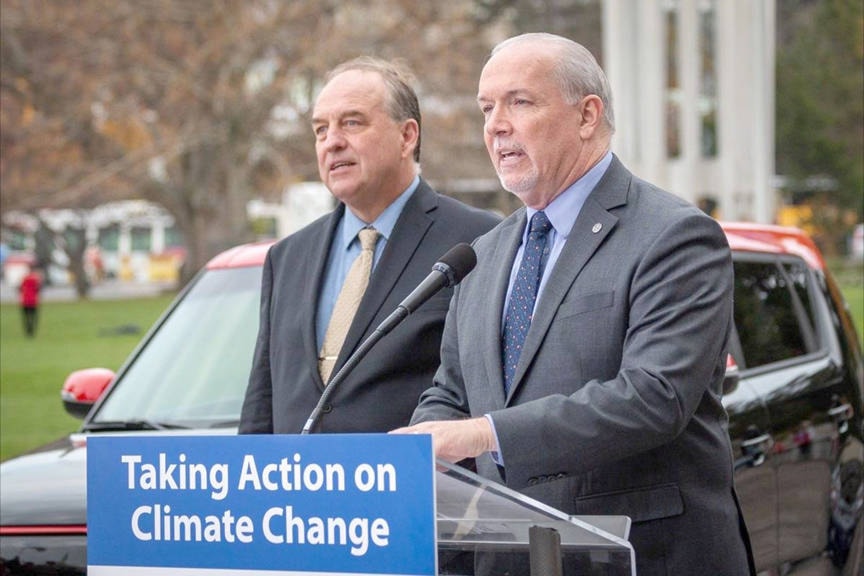Many residents of the Bulkley-Nechako region wonder how the provincial government’s new CleanBC initiative will affect the area.
Unveiled in early December of last year, the initiative would aim by 2040 to have every new car sold in the province be zero-emissions, encourage that cleaner fuels be available at gas stations, enhance the efficiency of new buildings so that they’re “net-zero energy ready” and cut down on residential and industrial organic waste and transform it into a clean resource.
READ MORE: VIDEO: B.C. reveals plan to cut greenhouse gas emissions by 60% by 2040
“With CleanBC, British Columbia is rising to the challenge of climate change. Every year, we’re seeing the unprecedented wildfires and floods that hurt so many people, communities and businesses. We need to begin changing how we live, work and commute to put B.C. on a cleaner, more sustainable path,” Premier John Horgan said in a news release.
Green Party leader Andrew Weaver said the plan is a “pathway for B.C. to have a thriving low-carbon economy” and praised it for the way it seeks to reduce the megatonnes of carbon that enter the environment.
In this region however, the response has been more reserved.
John Rustad, MLA for Nechako Lakes told Lakes District News that though the plan is interesting it’s missing many details.
“I am concerned that the plan does not seem to contain any plans for a fully built LNG Canada or for additional LNG projects. I’m not sure how they will manage those emissions in their plan,” he said.
He is also wonders how the initiative will address the infrastructural realities of northern B.C., such as restrictions on building codes.
“In addition, electric vehicles [EV] are not an easy option for those of us living in northern or remote communities. The plan does not discuss how these issues will be addressed.”
Based on current trends of EV usage in the region, widespread adoption of zero-emission cars would require a much larger expansion of vehicle sales and charging infrastructure.
After all, the charge station in Burns Lake has been used only a handful of times almost six years after it was installed, and only 7 per cent of car dealerships in northern B.C. sell EVs.
READ MORE: Burns Lake’s EV charge station used only 20 times since 2013
Rustad added that one of the “most troubling” aspects of CleanBC is that it suggests a need for the controversial Site C hydroelectric dam project in northeastern B.C.
The provincial government under the NDP, Rustad said, “messed around and delayed site C by a year which cost the taxpayers of BC about $1 BILLION due to the delay.”
The NDP had the B.C. Utilities Commission undertake a review of Site C in August, 2017 and by December of that year the government announced the project could resume.
RELATED: Environmental groups slam NDP decision to continue with Site C
The Regional District of Bulkley-Nechako (RDBN), for its part, said it was still evaluating how CleanBC will affect the area.
“The impacts to our region will depend on the manner in which the Province implements the initiative to achieve the goals they have identified,” said Jason Llewellyn, RDBN Director of Planning.
